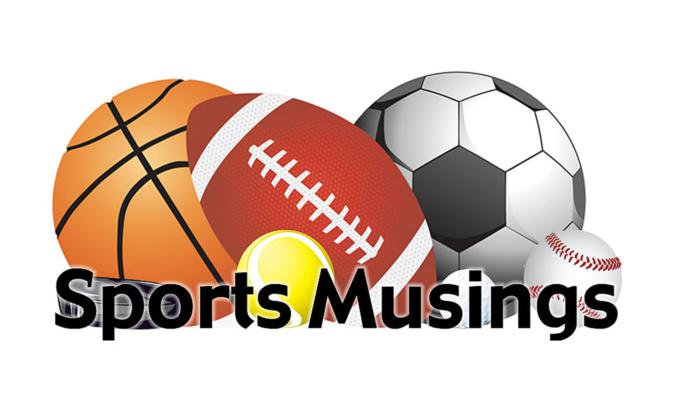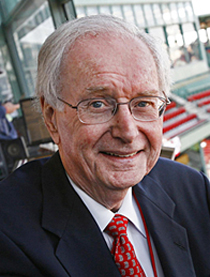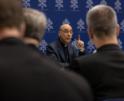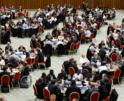
Culture
Unfortunately, no film or videotape of Dalkowski is known to exist, so both his speed and his wildness remain a mystery and always will.

Flavin
Back in the days when I was freshly out of college and trying to figure what to do with my life, my fascination with baseball flagged somewhat, if only temporarily. The Red Sox stunk and had for some time. Ted Williams, whose larger-than-life presence had dominated the landscape for my entire life, had retired and disappeared into the Florida Keys. Carl Yastrzemski had taken Ted's spot in left field but had yet to have a loaf of bread named after him. 1967 and the Impossible Dream were still some years away. Oh, I still followed the team and rooted for them, though not with the intensity of my school days. Nobody else did, either.
Fenway Park became, as the joke back then had it, the perfect place to hide out from the cops. Nobody would ever think to look there for you.
That explains why I missed out on the Age of Dalko. A lot of other people did, too -- including, for the most part, Dalko himself.
Steve Dalkowski, a native of New Britain, Connecticut, was reputed to possess the most blazing fastball in baseball history. He'd have been an all-time great were it not for the fact that it was also the wildest fastball in baseball history. Try as he may, he was unable to control it, or, as it turned out, much of anything else in his life.
It was estimated that he threw as hard as 110 miles an hour on a regular basis, and that he'd occasionally hit 115 MPH (the current record is 105.8, held by Aroldis Chapman). Where it was going, though, was anyone's guess. It explains why, though he was the property of the Baltimore Orioles, he never threw a single pitch in a big-league game.
Dalko's heyday was the end of the 50s and the early 60s and it was confined to the minor leagues, and mostly the lower minors, at that. Radar guns were not yet used to measure the speed of pitches, but sources with the reliability of Earl Weaver judged his fastball to be significantly faster than Nolan Ryan's; Cal Ripken, Sr., a catcher by trade who coached and managed for five decades, said he was the hardest thrower he ever saw, and that included Bob Feller, Sandy Koufax, and Aroldis Chapman. A southpaw, Dalkowski was not a physically imposing presence on the mound, standing 5'11" and weighing just 170 pounds -- about the same size as Pedro Martinez. Unfortunately, no film or videotape of Dalkowski is known to exist, so both his speed and his wildness remain a mystery and always will.
The Orioles were well aware of his control issues when they paid him a $4,000 bonus to sign with them out of New Britain High School in 1957. He had already thrown a no-hitter in which he struck out 18 batters, but also walked 18. But they figured anyone with an arm like his was worth the risk. They tried everything; having him throw more, having him throw less, throwing to a fixed target, conducting bullpen sessions with a player standing behind the catcher to chase down wild pitches. Nothing seemed to work. His pitches sometimes would be so off-target that they'd land in the stands. He once threw a one-hitter but ended up on the losing side of a 9-8 score because of all the walks he gave up. In 1960, for example, pitching for Stockton in the California League, he had 262 strike outs but also gave up 262 walks in just 170 innings pitched. He ended up with a career record of 46 wins and 80 losses; nothing to write home about.
How did he handle the pressure of living up to all the hype of his supersonic fastball and the frustration of being unable to control it? He drank. Too much. Way too much. And, drinking being a part of baseball's culture in those days, nobody did anything about it. At one point, he was paired up as the roommate of Bo Belinsky, the notoriously high-living pitcher whose career burned out quickly. Talk about a train wreck waiting to happen.
In 1962, Dalkowski found himself in Elmira, New York, of the Northern League under the tutelage of manager Earl Weaver, then working his way up the managerial ladder. Knowing that his pitcher had tested very low on his IQ scores, and that all the coaching advice only seemed to confuse him, Weaver kept it simple, merely telling him to "throw strikes," offering encouragement, and convincing him not to drink on the nights before he was scheduled to pitch. Dalkowkski's walks per inning rate greatly improved, and his ERA fell to a career low of 3.04.
The next year in spring training, he was a sensation and was told that he'd made the Orioles' roster. Then, on March 23, 1963, in an exhibition game against the Yankees, he felt something pop in his left elbow. It was still 12 years before the first Tommy John surgery and he was out of action for almost the entire season. When he did come back, his fastball had diminished to the mid-90s, still pretty good but no better than a lot of guys who also had good control. He was back in the minor leagues and, in only a few more years, was out of baseball altogether.
He stopped pitching but he didn't stop drinking. He became an itinerant worker, holding a job just long enough to pay for the next bender. Soon he disappeared into a haze of alcoholism, disappeared from sight, and was not found until years later, penniless and consumed by alcohol induced dementia. He was returned to his home town of New Britain under the care of his sister, Patricia. He lived out his days in an assisted living facility just across the street from the hospital in which he'd been born.
Steve Dalkowski died at the age of 80 on April 19, 2020, one of the early victims of COVID-19. Thus ended the sad tale of the man who was born with the gift -- or was it the curse? -- of the fastest fastball in baseball history.
- Dick Flavin is a New York Times bestselling author; the Boston Red Sox "Poet Laureate" and The Pilot's recently minted Sports' columnist.
Recent articles in the Culture & Events section
-
'Dignitas' and the mediaRussell Shaw
-
Scripture Reflection for April 14, 2024, Third Sunday of EasterDeacon Greg Kandra
-
St. Helena's House is established in the South EndThomas Lester
-
Is this synodality?Russell Shaw
-
Poking the hornet's nest of IVFFather Tadeusz Pacholczyk


















